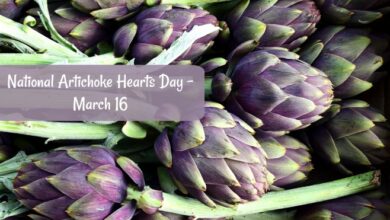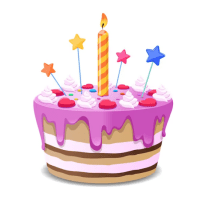Happy Holi Festival
Happy Holi Festival: Exploring the Significance of Colors and Unity in Spring Celebrations
Dive into the world of Happy Holi Festival, where vibrant colors and unity intertwine to mark the arrival of spring. Uncover the stories, rituals, and cross-cultural impact of this exuberant Indian celebration.
Introduction
What is Happy Holi Festival?
Happy Holi Festival, also known simply as “Holi,” is a lively and exuberant springtime celebration observed predominantly in India and other parts of the world with Indian communities. It was celebrated in the month of March. It is a festival of colors, unity, and joy, marked by the enthusiastic splashing of vibrant hues on friends and family. Holi holds cultural, religious, and social significance, making it one of the most anticipated festivals in the Indian calendar.
History and Significance
Legends and Stories
Holi’s origins can be traced back to various legends and stories, each reflecting the triumph of good over evil. One popular legend is that of Prahlada and Holika, symbolizing devotion and the defeat of wickedness. Another well-known tale revolves around the mischievous love between Lord Krishna and Radha, infusing Holi with themes of romance and playfulness.
Cultural Importance
Beyond its religious connotations, Holi fosters unity among communities. It breaks down social barriers, as people from all walks of life gather to revel in each other’s company, regardless of caste or class. This sense of inclusivity amplifies the festival’s charm and significance.
Religious Observations
Holi is observed at the end of winter and the arrival of spring. It signifies the victory of good (represented by Prahlada) over evil (symbolized by Holika), with bonfires lit to commemorate the burning of Holika. The next day, people engage in revelry, marking the arrival of spring and new beginnings.
Symbolism of Colors
Colors play a pivotal role in Holi celebrations. They symbolize love, happiness, and the diverse hues of life. Participants throw colored powders, known as “gulal,” at each other, creating a mesmerizing kaleidoscope of joy.
Preparations
Cleaning and Decorating
In the days leading up to Holi, homes are cleaned and adorned with colorful decorations. This symbolizes the welcoming of spring and the removal of negativity from one’s surroundings.
Shopping and Gifts
Holi is also a time for shopping and exchanging gifts. People purchase new clothes and festive accessories, enhancing the celebratory atmosphere. Gifting sweets and special treats is a common practice during this time.
Traditional Sweets and Snacks
Savoring traditional sweets and snacks is an integral part of Holi. Delicacies like “gujiya” (sweet dumplings), “puran poli” (sweet flatbread), and “bhang” (a special drink) are enjoyed with fervor.
Water and Color Supplies
Water guns, balloons, and vibrant colored powders are essential for Holi celebrations. The playful drenching of water and smearing of colors on friends and family create an atmosphere of pure delight.
Rituals and Traditions
Holika Dahan
Holika Dahan, also known as Chhoti Holi, is celebrated the night before Holi. Bonfires are lit to symbolize the triumph of good over evil. People gather around the flames, offering prayers and seeking blessings.
Playing with Colors
The heart of Holi lies in the exuberant playing of colors. People of all ages participate in this joyful act, making the festival a harmonious display of diversity and unity.
Cultural Events and Performances
Communities come together to organize cultural events and performances during Holi. Music, dance, and traditional folk performances add an extra layer of celebration to the festivities.
Sharing Happiness
Holi transcends social norms as people share happiness, laughter, and camaraderie. The day is marked by forgiveness and reconciliation, as differences are set aside in the spirit of joy.
Bonfires and Community Gatherings
The lighting of bonfires not only signifies the victory of good but also fosters a sense of community. People come together around the warmth of the fire, reinforcing bonds and friendships.
LSI Keywords in Happy Holi
- Spring Festival of Colors
- Indian Festival Celebrations
- Holi Phagwah Festival
- Dhulandi Celebrations
FAQs
What is the meaning of Holi?
Holi signifies the victory of good over evil, the arrival of spring, and the celebration of unity through colorful revelry.
How long does the Holi festival last?
Holi is typically celebrated over two days, with Holika Dahan on the first night and the main festivities on the following day.
Why is Holika Dahan celebrated?
Holika Dahan commemorates the defeat of the demoness Holika and the protection of Prahlada, an embodiment of virtue.
What are the traditional Holi sweets?
Traditional Holi sweets include gujiya, puran poli, and other delectable treats enjoyed during the festive season.
How do people protect their skin during Holi?
Applying oil or moisturizer before playing with colors helps protect the skin from harsh pigments and makes color removal easier.
What is the origin of playing with colors?
The tradition of playing with colors is rooted in the playful love between Lord Krishna and Radha, as depicted in ancient mythology.
Can tourists participate in Holi celebrations?
Yes, tourists are often welcomed to join Holi celebrations, provided they respect local customs and engage in the festivities with sensitivity.
How is Holi linked to the arrival of spring?
Holi’s timing coincides with the transition from winter to spring, symbolizing the rejuvenation of nature and the human spirit.
What is the spiritual significance of Holi?
Spiritually, Holi represents the triumph of righteousness and the victory of positive values over negative forces.
Why is Holi sometimes called the Festival of Love?
Holi’s association with Lord Krishna’s playful love and the breaking of social barriers earned it the moniker “Festival of Love.”
How do different regions of India celebrate Holi?
Different regions have unique customs, but the essence of color, camaraderie, and celebration remains consistent throughout India.
What should tourists know about Holi etiquette?
Tourists should seek permission before applying colors, respect personal space, and participate in a joyful, respectful manner.
Are there any safety tips for celebrating Holi?
Wearing old clothes, using natural colors, protecting the eyes, and staying hydrated are important safety precautions during Holi.
How can I make natural Holi colors at home?
Natural Holi colors can be made using ingredients like turmeric, beetroot, spinach, and flower petals, ensuring a safer celebration.
What is the environmental impact of synthetic colors?
Synthetic colors used in Holi can harm the environment and health. Opting for natural colors is an eco-friendly choice.
What are some famous Holi events in India?
Mathura’s Lathmar Holi, Vrindavan’s Banke Bihari Temple Holi, and Delhi’s Holi Cow Festival are renowned Holi celebrations in India.
How has Holi been modernized in recent times?
While retaining its traditional essence, Holi has evolved to include modern music festivals, parties, and larger-scale events.
What is the role of bonfires in Holi celebrations?
Bonfires symbolize the destruction of evil, foster community bonding, and mark the beginning of the Holi festivities.
How do people spiritually prepare for Holi?
Spiritual preparation involves inner reflection, forgiveness, and cultivating positive intentions for the festive celebrations.
What is the connection between Holi and Radha-Krishna?
Holi’s association with Radha-Krishna’s love showcases the divine bond between the two, embodying pure and joyful devotion.
How is Holi connected to the triumph of good over evil?
Holi’s story of Holika’s defeat and Prahlada’s protection reinforces the eternal victory of righteousness over malevolence.
What are some popular Holi songs?
“Rang Barse,” “Holi Khele Raghuveera,” and “Balam Pichkari” are popular Holi songs that amplify the festive spirit.
How can one respect the cultural aspects of Holi while participating as a tourist?
Tourists can learn about Holi’s history, adhere to local customs, and engage in the festivities with cultural sensitivity.
Conclusion: Happy Holi Festival
Embracing Joy and Unity
Happy Holi Festival is more than just a festival of colors; it’s a celebration of unity, joy, and togetherness. As people come together to play, dance, and share laughter, the boundaries that often divide us fade away.
Preserving Traditions
Through generations, Holi has preserved its rich traditions while adapting to the changing times. It remains a powerful reminder of our shared heritage and the importance of holding onto the values that define us.
Spreading Love and Happiness
As colors fill the air and hearts are lightened, Holi reminds us of the simple yet profound joys of life. The festival encourages us to spread love, happiness, and positive energy to everyone around us.



